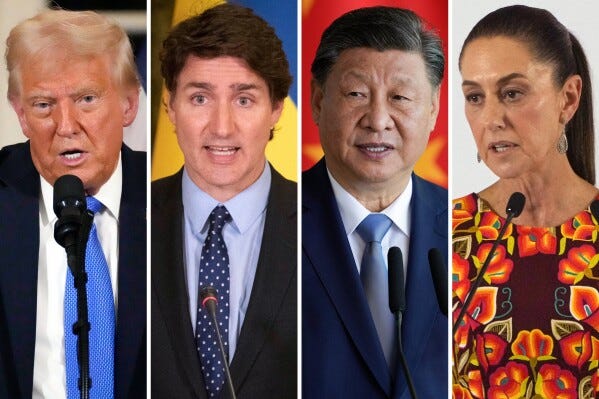The Art of the Trade War: Trump’s Reckless Tariff Gambit
How One Man’s Obsession with Protectionism is Steering America Toward Economic Chaos
Donald Trump, in his usual bombastic fashion, took to Congress with a speech that was less a policy address and more a victory lap soaked in economic delusion. Among the many troubling statements he made that night, one in particular stood out as a harbinger of impending economic turmoil: his claim that tariffs "protect the soul of our country." A bizarre sentiment for anyone with even a rudimentary grasp of economics, but a chilling one when it comes from the sitting U.S. president.
According to former IMF analyst John Lipsky, speaking on behalf of the Atlantic Council, Trump's words should not be taken lightly. The man is not just using tariffs as a bargaining chip; he sees them as a foundational principle of economic patriotism. That’s not just misguided—it’s outright dangerous. Next week, Trump intends to slap tariffs on steel and aluminum, targeting both “friends and enemies,” his own words, including long-standing allies in the European Union. The next few months, Lipsky warns, could see America plunged into a global trade war of its own making.
The sheer inevitability of Trump’s tariff frenzy can be explained by one simple truth: he sees them as a cash cow. The Committee for a Responsible Federal Budget estimated that his new tariffs could rake in over $100 billion a year. To Trump, that’s a big, beautiful revenue stream, one that might help plug the gaping holes left by his tax cuts—a fiscal blunder that ballooned the deficit but gave his billionaire pals a reason to pop the champagne. Yet, even that $100 billion barely scratches the surface, accounting for just 2% of total U.S. revenue. Hardly the magic bullet he claims.
And here lies the contradiction at the heart of Trump’s tariff obsession. He claims it will revitalize American manufacturing, yet the reality is far more complex. Take, for instance, the technology sector. A tariff on laptops would have to exceed 25% just to make domestic manufacturing seem competitive against Chinese imports. But even if that were the case, restructuring supply chains would take years—years that businesses and consumers don’t have.
Who pays the price for this economic fantasy? The American people. While Trump brags about his so-called tough stance on trade, American consumers and businesses will be left footing the bill. Tariffs don’t function as some magical punishment on foreign countries; they are taxes on domestic buyers. If Trump actually understood the basics of trade—something he’s been pretending to grasp since slapping his name on cheap merchandise—he might recognize that these protectionist measures are nothing more than an economic own-goal.
The final irony? The U.S. is drowning in national debt, and instead of implementing sustainable policies, Trump is lighting economic fires and hoping they put themselves out. His strategy is less about “winning” and more about kicking the can down the road while selling his base a nostalgic illusion of American manufacturing dominance. But the rest of the world isn’t buying it, and soon enough, neither will the American people.



